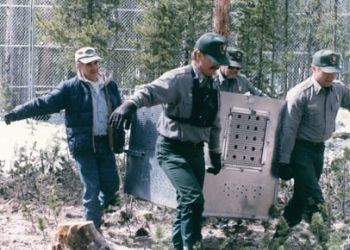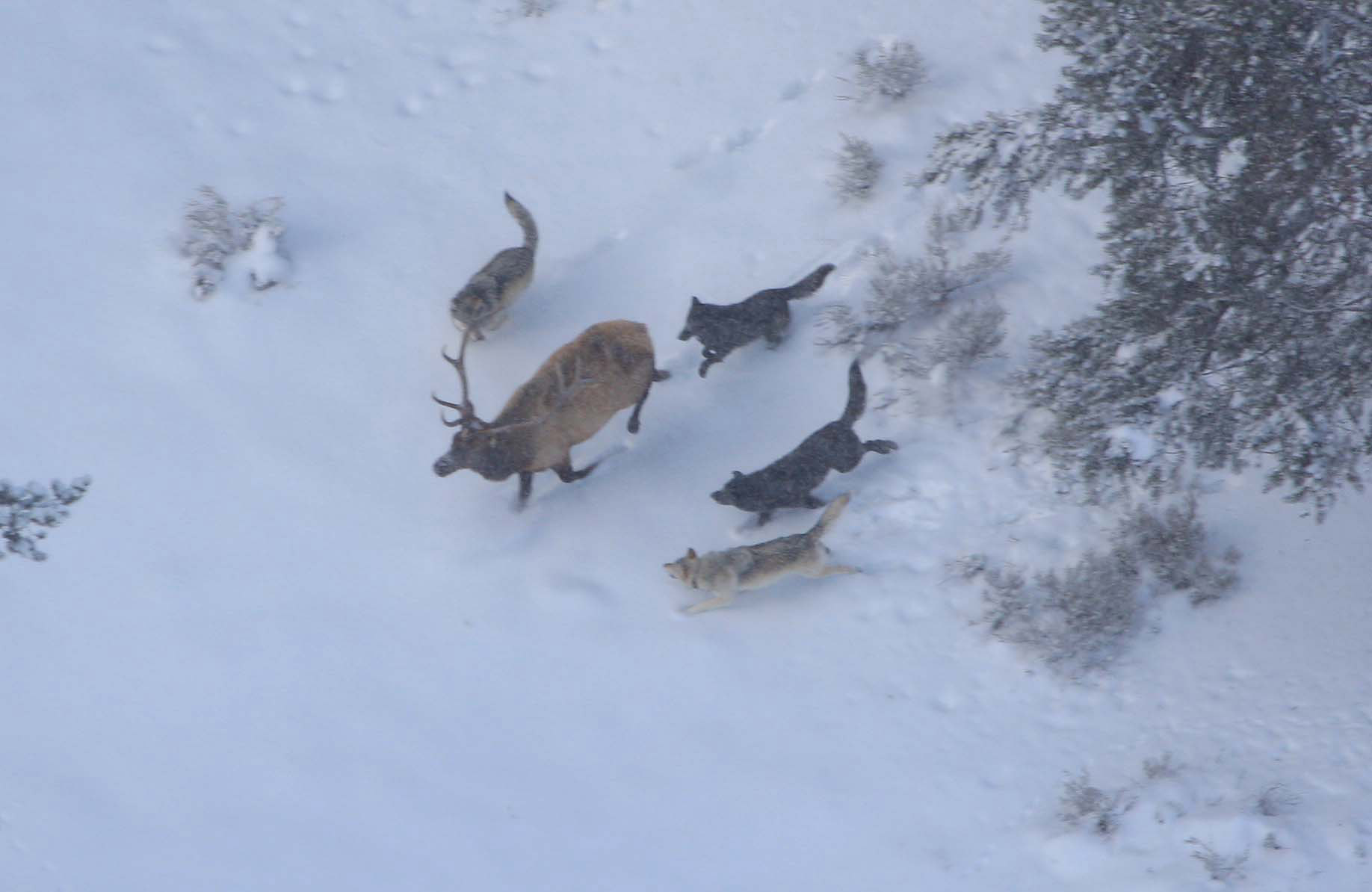What would the African savanna look like without the lion?
What if, when visiting the great parks like Yellowstone, there were no grizzly
bears, wolves, or mountain lions? How intriguing would the ocean be without
sharks or whales? What magic would be lost if the jungle was tiger-less? While
these questions spark the imagination, there is a real danger of a world
without the great predators.
Since
humanity’s beginning large carnivores have played an important role in human
psyche and cultures around the globe. Perhaps it is their size, or the fear
they inspire in us, that makes them charismatic and mystical. In the Himalayan
Mountains, the snow leopard is central in the Buddhist and indigenous beliefs. In
North America, the Yukon Indians believed they attained their knowledge of how
to live from the bears. Yet, as time went on, the fate of large predators
changed. The animals that transfixed us soon became enemies of progress.
Top predators have played a significant role inculture and religion. A Tibetan illustration of
the snow leopard mythically depicts the elusive leopard of the Himalayas.
the snow leopard mythically depicts the elusive leopard of the Himalayas.
That
sentiment survives until today. As more and more research is being done, it is
clear that our great carnivores are beginning to disappear. The loss of the
large predators is not merely an exercise in imagination. Wild tigers are
likely to be extinct in the next ten years. Lions have witnessed a 95% decline
in the last fifty years. Wolves precariously balance on the edge, but are
fortunately protected by the federal Endangered Species Act. Almost a third of
all shark species are on the brink of extinction. Needless to say, large
carnivores are on the decline, and the conservation efforts to save them are
slow-going.
Bringing
the large carnivores back is a tricky process. The public can be scared of
them, they often conflict with agricultural live-stock interests, and they have
large habitat requirements. Cougars, for instance, need 85 km2 in
order to have enough resources to survive. As human populations grow, the large
tracts of land needed for the terrestrial carnivores are being transformed into
subdivisions and are being fragmented by roads and highways.
But,
what is really the problem of losing the large carnivores? Kids dream of sabre-tooth
tigers and dinosaurs, so it would be tragic for them to yearn for sharks and
other predators too. Yet, the loss of important predators has larger impacts
than nostalgia, though. A new paradigm has been emerging in the scientific
world. Its momentum has been slowly increasing since the 1960s. This novel concept
is called trophic cascades, and it means apex predators do a lot more to shape
the world around us than we realize.
The loss of sabre-tooth tigers were thought cause trophic cascades during
the Pleistocene.
Trophic
levels are an ecological concept that help elucidate how energy flows through
an ecosystem. Plants and plankton are at the bottom of the trophic pyramid, and
they produce all energy and matter in an ecosystem through photosynthesis.
Herbivores eat the plants, and they comprise the next tier. Add on different
levels of predators and you eventually make it to the top, where apex predators
reside. The animals are the top of the food chain, but because of their energy
(trophic) requirements, only a certain amount of them can reside in an
individual habitat.
Ecologically,
there are always a variety of patterns between predator and prey. Most simply,
when predators increase, prey decrease, and a dynamic balancing act ensues. But,
dramatic changes can occur when predators are removed altogether. Top-down control
of an ecosystem is removed, and this relieves pressure off of prey populations,
sometimes allowing their numbers to increase dramatically. I think about where
I live, in the Piedmont of North Carolina. Our large predators have been missed
for quite some time—the wolf, the mountain lion—and those important ecological
roles have been passed down to animals who can’t handle the work load—black
bears, coyotes, and bobcat.
As a consequence, populations of
white-tailed deer and rodents have exploded, and the effects of their new
hegemony are not beneficial. Of course, we don’t like the increased chances of
deer-related car accidents or the higher prevalence of tick-borne illnesses,
but their effects are even more wide-ranging than that. Deer are constant grazers,
and they will graze any area to where they can no longer reach. This leaves a
dramatically altered understory for the rest of the animal community. It is as
if someone moved into the neighborhood, bought all of the nice homes, and left
all of the lower quality homes for everyone else. Deer not only over-consume
plants that comprise other animal’s shelter, but they also only leave plants
untouched that are unsuitable to be eaten by other organisms.
For the Piedmont, and for other
areas of the United States where this problem occurs, the effects can be
ecologically staggering. Researchers have discovered that these irruptions of
white-tailed deer are depleting herbaceous plants and reducing the recruitment
of oaks and hemlocks. This changes the resources available to other wildlife,
such as song birds and mast consumers. Because the predators are gone, there is
not much else to keep the deer in check year-round.
While the white-tailed deer are
the consequences of predator loss in my backyard, trophic cascades are
occurring around the world. It wasn’t until the 1960s that the idea even took
hold in the ecologist community, and since then, the evidence of trophic
cascades has been mounting. Originally, ecologists thought that ecosystems are
structured by plant or plankton productivity. The types of plants, and how
quick they grow, determine what lives where. However, in 1960, Hairston, Smith,
and Slobodkin (HSS) developed the “green world” hypothesis: the planet is green
because there are predators that prevent herbivores from eating everything.
It wasn’t until Robert Paine
began a study on the Olympic Peninsula of Washington State that ecologists
began to tentatively accept HSS. In a study on rocky coastal communities, Paine
elegantly discovered that the ochre sea star (Pisaster ochraceous) played a key role in stabilizing the ecosystems
on the rocky outcrops of the coast. Paine visited different rocky outcroppings
each month, and at one site, he would toss all of the sea stars he found back
out into the sea. He left the other site alone.
The ochre sea star has a variety of colors and can dominate
habitats on the rocky, tidal coasts of the Pacific Northwest.
As the ochre sea star is the top predator in those habitats, they consume all sorts of marine invertebrates. It did not take long for Paine to realize what effect removing the top predator was having. Whereas the plot he had left untouched retained a diverse cast of characters—various species of limpets, barnacles, snails, and mussels—the plot without the sea star had changed dramatically. The California mussel (Mytilus californianus) had nearly taken over the whole rock. With its top predator gone, the ecosystem collapsed from a diverse assemblage to a habitat dominated by one species.
By removal of the apex predator,
Paine showed that changes cascaded down through all trophic levels in the
ecosystem. Marine filter feeders (herbivores) and low-level predators were all
lost due to the dominance of one species. Perhaps the California mussel is like
the white-tailed deer in that sense. Without apex predators, ecosystems
diminish in biodiversity for both plant and animal communities, and these
alterations to a habitat can change the face of the landscape.
Unfortunately for ecologists,
not all ecosystems and trophic interactions are as simple as the ochre sea star
and its coastal rocky habitat. Especially in terrestrial habitats, top
predators move from one community to another, often becoming a temporary
resident where conditions are favorable. Thus, they can be a stabilizing
influence for more than one community. Terrestrial ecosystems also have many
players filling many niches, and the more complicated a system is, the more
difficult it is to discern distinct trophic relationships.
In 1995,
from a combination of blood, sweat, and tears, scientists and conservationists
provided the opportunity of a lifetime. In 1926, the last two wolves were
killed in Yellowstone National Park, and in 1995, eight wolves from Canada were
re-introduced. A lot had changed in those seventy years in the wolf’s absence.
The riparian habitat had been degraded, for the cottonwoods, aspens, and
willows had failed to flourish. The streams were eroding away. The culprit was
the elk (although ecologists didn’t realize it), whose populations swelled so
high that even staff of the National Park Service could not cull the herds well
enough to restore the ecosystem’s balance.
Scientists and members of federal agencies carry a
wolf to release for reintroduction.
What
Aldo Leopold had suggested 50 years earlier finally came to being with the
introduction of the eight wolves (Canis
lupus).Yellowstone once again regained one of its most important members.
Currently, the wolves have reached a population of 98 individuals, and the
changes that have occurred in the Greater Yellowstone System are dramatic.
Coyote populations have been reduced by half, so their thieving of newborn
pronghorn antelope dropped and the pronghorn entered a revival. Fear of predation
allowed the riparian trees to thrive as elk shifted their foraging patterns to
avoid the wolves. With the trees came songbirds and beavers.
The presence of wolves have dramatically influenced the landscape
of the Greater Yellowstone System.
The two
scientists who have led the research on wolves and trophic cascades, Bob
Beschta and Bill Ripple, have also replicated the Yellowstone reintroduction with
many other national parks in the West. While many scientists were slow to
accept that the wolves could be having an effect to such a large extent,
Beschta and Ripple continued to press on in their studies, and now it is well
accepted the canid pack-hunters are essential architects of the ecosystem.
Trophic
cascades are a concept that originally started as the revolutionary green world
hypothesis of HSS. Today, it is a well established fact that top predators and
producers are equally significant in how they affect the composition of an
ecosystem; although, there are still some last redoubts who resist this new
paradigm. Nonetheless, in the quest for conservation, protection of
biodiversity, and responsible stewardship, top predators cannot be ignored.
While we have only discussed the dynamic between predator and ungulate
herbivores, there are a variety of other detrimental effects absent predators
can cause.
Without
the apex predators, mesocarnivores can explode in abundance. This includes
North American mammals like raccoons, opossums and the feral housecat. With the
larger populations of mesocarnivores, local extinctions of plants and small
animals (herpetofauna, birds) can occur. Disease can also become a larger
issue. I wonder if trophic cascades haven't led, in part, to the rabies
epidemic that has occurred throughout the Southeast.
The
dynamic of trophic cascades are not strictly tied to terrestrial systems
either. Large marine vertebrates have also declined dramatically. Some of the
great whales, sharks, and tunas have declined dramatically. Those that remain
have been scattered into small nomadic groups or failing fisheries. James Estes
found that sea otters (Lutra lutra)
regulated sea urchin populations, allowing the giant kelp forests (Macrocystis pyrifera) to grow. Kelp
forests are one of the richest marine ecosystems. However, with primary food
sources for killer whales (Orcinus orca)
declining, the killer whales have shifted to consuming otters. The existence of
Pacific kelp forests hangs in-between. Other studies done in the ocean have also
shown that losses in apex predators alter the productivity of algae, the
abundance of fish, and even the patterns of ocean currents.
Without their normal food sources, killer whales could cause
the collapse of kelp forests.
So, what
do we do now? The decline of top predators at the hands of society leaves us
with a duller world to say the least. Their absence also leads to severe
economic problems for agriculture, forestry, fisheries, etc. Thus, when we
think about what must be protected, the apex predators of the sea and land must
be a top priority. Otherwise, in combination with climate change and the myriad
other environmental issues looming ahead, the loss of top carnivores could
cause ecosystems worldwide to shift to alternate states that leave something to
be desired. If the top predators are lost for good, then we will see a world of
broken ecosystems manifest, and only we will be able to see the ghosts of
mighty creatures that once roamed.
(Because it was written as an article, there are no citations, but all information was gathered from "Where the Wild Things Were" by William Stolzenburg and from "Trophic Cascades" edited by Terborgh and Estes. Also, I do not have rights to any images used in this post except the deer).








No comments:
Post a Comment